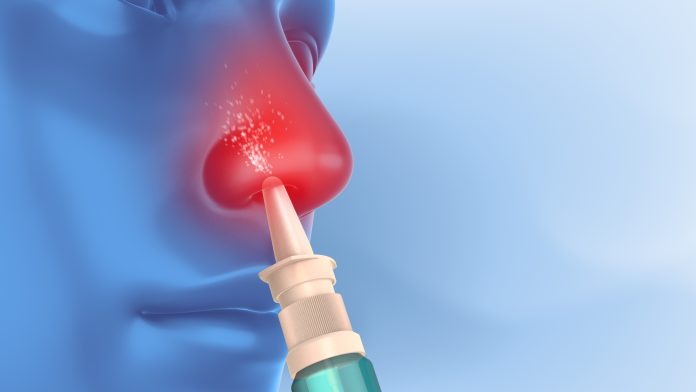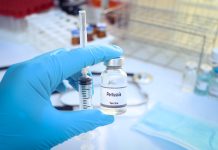A new systematic review shows that nasal spray adrenaline (via liquid or powder sprays) can be as fast or faster than injections for treating anaphylaxis, a possible needle-free alternative to EpiPen®
Scientists are investigating whether nasal sprays could one day replace injections for delivering life-saving adrenaline during severe allergic reactions. A new analysis presented at the European Emergency Medicine Congress sheds light on how this alternative approach might work and what it could mean for patients at risk of anaphylaxis.
Research highlights the potential of needle-free adrenaline for anaphylaxis
Anaphylaxis is an acute allergic reaction to substances, such as nuts or insect bites or stings, and is a life-threatening emergency. When a patient goes into anaphylactic shock, it can lead to itchy skin, swollen eyes, difficulty breathing, abdominal pain, nausea, and vomiting. It needs to be urgently treated with adrenaline, usually via an injection or a drip in the patient’s vein.
The researchers, including Dr Danielle Furness, conducted a systematic review of five international studies comparing intramuscular-injected adrenaline devices, such as EpiPens®, with nasal sprays while she was finishing her medical degree at the University of Buckingham, UK. The studies took place in Israel, Canada, Thailand, the USA, and Japan.
She told the congress: “My review found that intranasal adrenaline, a needle-free alternative delivered as a liquid or dry powder spray, can be as effective as the EpiPen, with some forms reaching the bloodstream even faster.”
Nasal sprays outperform injections
Dr Danielle Furness evaluated the safety and efficacy of different adrenaline delivery systems, as well as the pharmacokinetics, which is the process by which the drug moves into and throughout the body.
She found that the absorption of the nasal sprays was comparable to or even faster than injections, taking a maximum of 2.5 to 20 minutes, compared to 9 to 45 minutes for injected adrenaline. Furthermore, similar or higher levels of adrenaline were detected in the blood plasma of patients who received the nasal sprays. In contrast, heart rate and blood pressure were comparable between those who received adrenaline via nasal spray and those who received an injection. Side effects of the nasal spray were mild and passed quickly.
Importantly, nasal sprays are more convenient and portable than injection devices, as they are more user-friendly and last longer. Nasal sprays have a shelf life of two years, whereas injections must be replaced every 12 to 18 months.
Dr Furness said: “If approved for use, nasal sprays could become a suitable and equally effective needle-free alternative to the EpiPen, which is the current treatment for anaphylaxis. Patients would still need clear instructions on how and when to use a nasal spray. Still, it could improve the timely administration of adrenaline, especially for people who are afraid of needles, or in public, out-of-hospital settings, which could reduce the rates of hospitalisations. For doctors, it is another tool that could help prevent delays in treatment.
“I believe that once strong, real-world evidence supports the safety and effectiveness of nasal sprays, they could be incorporated into national anaphylaxis guidelines. An initial rollout should include close and strict monitoring, encouraging doctors to report any cases where it may not have worked as expected, to ensure patient safety and maintain confidence in the treatment.”
Neffy is the first nasal spray to be approved and prescribed in the USA and Europe. In the UK, the Medicines and Healthcare products Regulatory Agency (MHRA) has approved it as the first needle-free emergency treatment for anaphylaxis. It is expected to become available in the UK towards the end of 2025.
Dr Felix Lorang is a member of the EUSEM abstract selection committee. He is head of the emergency department at SRH Zentralklinikum Suhl, Thuringia, Germany, and was not involved with the research. He said: “Injection devices, such as EpiPens, have been in use for decades to deliver adrenaline to patients with anaphylaxis. However, some patients experience barriers to using them for reasons such as needle phobia or how easy they are to carry around all the time. From my experience, many people also hesitate when using a needle on a relative or friend for fear of hurting or injuring the person. Nasal sprays appear to overcome these barriers and, if further studies confirm their safety and efficacy, they will be a useful alternative for patients as well as an extra tool for medical staff to use.”











